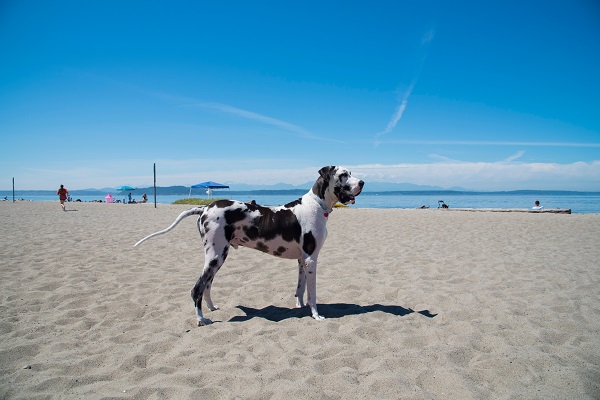You have a very happy, healthy, and active dog – she enjoys walks, park plays, and even indoor activities, but the whole scenario flips when she sees the leash. You may be wondering about the possibilities of scaring her off or annoying her – but clueless.
When no amount of pampering, bribing, and even looking in her hiding spots helps, you better ask a dog trainer: why does my dog run & hide when I try to leash him?
Let us make a checklist in questionnaire form to understand the probabilities of a dog feeling uncomfortable with the leash or having internal worries that he/she is struggling to express. Look for signs that bother your dog when you reach for the leash. Take the steps slow and be more patient with the whole situation.
Read on to pinpoint the possible reasons for your dog’s fear.
What is the reason for fear in my dog when I am reaching for the harness?
Your dog needs exercise and activity. You cannot take any pet out without a leash; however, you can start by taking it slow. Maybe your dog feels uncomfortable with the leash you got for him/her. Walks and social activities are okay for the dog, but the discomfort of wearing a harness around the neck makes them anxious.
Look for the material the leash is made of. Also, check for the size – is it too tight or loose? You can also look for any pokey thing, something abrasive, or anything that can cause discomfort while wearing the leash itself.
You can try the padded harness around their body, making it more comfortable to wear. You can also explore the retractable herringbone pattern harness that is easier to wear.
Could it be the training session with the leash?
There is always a possibility that your pet hates the training sessions themselves. It means they are not happy learning to stay in control, listen to the commands, and feels confused while you are leash training them. In such cases, the moment you reach for the dog collar, they will whizz out of sight.
It seems easier to control and train older dogs. But, if you have a rescue dog, they may have behavioral issues due to the background. The history of every rescue dog plays a vital role in training sessions.
Improper training with the previous owner’s leash will negatively react toward dog collars. You can sort this by speaking to a professional trainer and being more compassionate with your pet.
What are the chances of having an anti-social behavior – check?
You got a dog from a shelter house and want to start the outdoor training, but she is dead scared of even wearing the leash. She relates the leash with social activity – she has a phobia of the outdoor environment, so she expresses that by refusing to wear the leash. You can help her by taking baby steps towards socializing.
Make her feel comfortable and convey that it is okay to feel uncomfortable. Take her favorite toy and treats while going out. Encourage and appreciate her for her brave move.
You can start by not using the leash and planning short walks, then gradually adding the leash by explaining that it is for her safety and not to control her. You will be surprised that dogs do respond to emotional communication.
Could it be the harsh weather?
Most of the time, smaller and hairless dogs fear the rough weather. You can always look for the signs they express when it’s heavily raining, snowing outside, or the sun is too bright – the dog refuses to wear the collar. They might want to stay indoors and play by skipping the exercise.
You can use the dog jacket if it’s too cold outside or carry some water when it’s sunny. Assure it’s okay to wear the harness and go out with preparations.
What are the chances of a dog injury or illness?
Your dog is turning 13, and it is senior age for a dog to stay active. Look for the symptoms that might be the possible reason for the denial of walks and leashes. Even a younger dog might feel unwell and refuse to go out for training. Understand the reason and check with the vet immediately.
Dogs get arthritis, slipped discs, bone issues, cystitis, and other health problems that make them grumpy and lame. Support by giving them rest, anti-inflammatory supplements, and a nutritional diet.
Dos and don’ts for making the dog walks more pleasant and less jittery
- Never force your pet to wear the leash. There is a thin line between being assertive with your commands and forcing them.
- Do not intimidate them with multiple commands and instructions. Dogs can feel confused by too many orders. Be slow and straightforward before approaching with the leash.
- Let them have a proper sniff and look at the dog collar. It will comfort you and help you understand that the leash is not to control but for mutual safety.
- Encourage and appreciate your fur friend when they wear the leash by a treat or backrub.
- When you have more pets who wear leashes, you start by putting the collar on other dogs. This way, you can set an example for the one who fears social walks and wearing the harness.
Conclusion
Speak to the trainer and work together to comfort your dog to come out of the dog leash fear.

 DogExpress
DogExpress


















 in Chandigarh, India.
in Chandigarh, India. 
